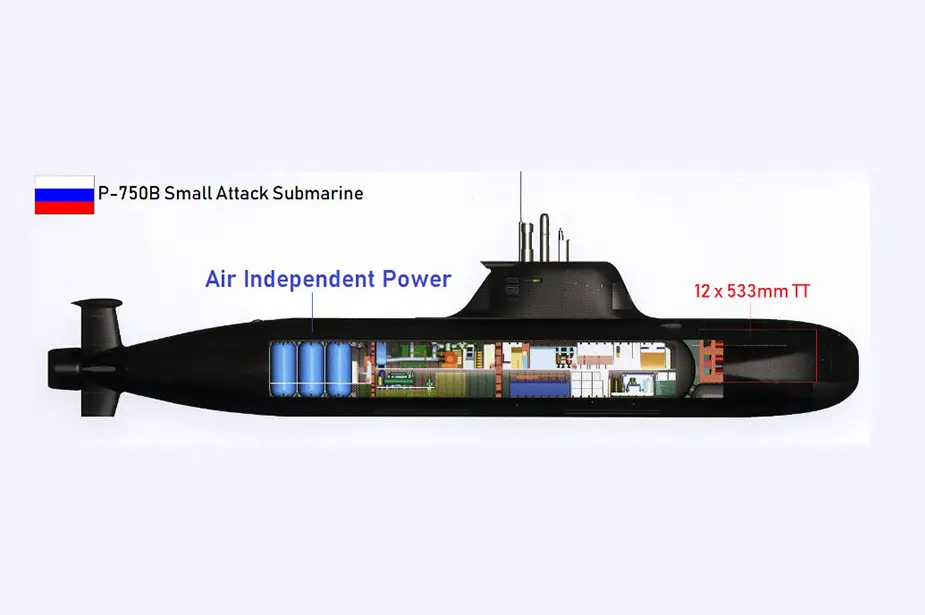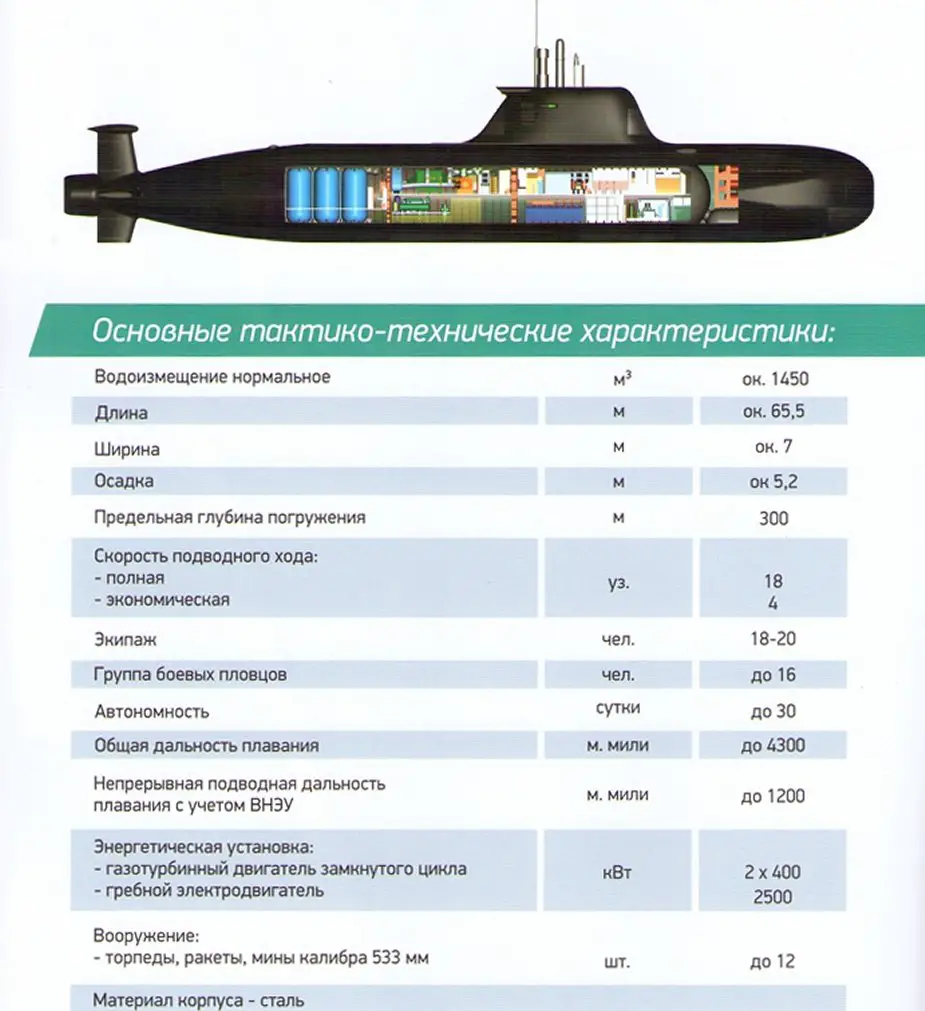The United Shipbuilding Corporation displayed at Army-2020 forum a scale model of the new Serval-class P-750B submarine, the Independent Military Review writes.
Follow Navy Recognition on Google News at this link
 Serval P-750B scale model at ARMY-2020 defense show. (Picture source: Malakhit Design Bureau)
Serval P-750B scale model at ARMY-2020 defense show. (Picture source: Malakhit Design Bureau)
The Soviet collapse limited the number of constructed project 865 submarines to two: MS-520 in 1988 and MS-521 in 1990. They operated in the Baltic Sea and were scrapped on the threshold of the centuries. Despite a brief service record, they provided valuable experience in the design, construction and operation of submarines.
Malakhit used the experience in the design of multirole small-displacement torpedo submarines for foreign customers. Market research showed there were importers who never operated submarines but wanted to create an underwater component of their navy. Besides, some countries needed small submarines to guard seaports and the coastline, as well as for training purposes.
There was a deterred demand, as market needs for small multirole submarines remained. It was possible to satisfy it by prudent use of the resources of major sea powers which were ready to finance prospective technologies and achieve a revolution in naval arms. Air-independent power plants are such a technology.
Many commercial and state companies in dozens of countries are developing such power plants. None of the anaerobic plants is ideal in all respects. Each has its advantages and drawbacks. Shipbuilders have to take into account geographic specifics, deployment conditions, and skills of foreign navymen.
German HDW Company progressed most in satisfying the needs of the national fleet and NATO allies. It built a series of Type 212/214 submarines with air-independent power plants on fuel elements with intermetallide hydrogen storage.
The German U-32 submarine could sail underwater for 18 days and covered 2800 km without surfacing. The Germans use the high characteristics to confirm the correctness of solutions.
 Serval P-750B scale model at ARMY-2020 defense show. (Picture source: Malakhit Design Bureau)
Serval P-750B scale model at ARMY-2020 defense show. (Picture source: Malakhit Design Bureau)
However, the German solution is costly. The submarine uses hydrogen metal hydride to obtain a high safety, but it is weighty and occupies a big volume. It properly operates in relatively cold seas, but there are fears that problems may emerge in tropical seas. Besides, special coastal infrastructure is necessary. The German solution has both advantages and drawbacks and the effect is yet to be estimated.
The current development stage of diesel-electric submarines is related to capsulized lithium-ion batteries which do not discharge hydrogen. They will replace lead-acid batteries and exceed them in capacity and charging/discharging current. The new batteries considerably increase underwater navigation parameters. Thus, a Lada-class submarine of project 677 will uninterruptedly sail underwater for 13-15 days instead of 9-10 days.
The lithium batteries do not make air-independent plants unnecessary. Rubin Design Bureau is creating a new submarine option with an additional compartment to accommodate a unit for hydrogen discharge by diesel fuel reforming.
The compartment will double or triple underwater navigation at a small speed of 3-5 knots and promote covert operations at adversary communications and coast.
Malakhit is doing it its own way and designed projects P-650E and P-750B. The former is a diesel-electric submarine with an additional compartment for air-independent power plant. The latter has a single main power plant based on a gas turbine. Such a solution provides proper characteristics. The submarine can stay underwater for a longer time and does not need specific coastal infrastructure, the Independent Military Review said.
© Copyright 2020 TASS Navy Recognition. All rights reserved. This material may not be published, broadcast, rewritten or redistributed.



